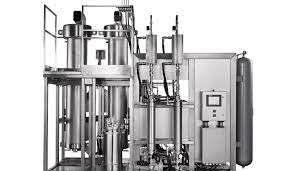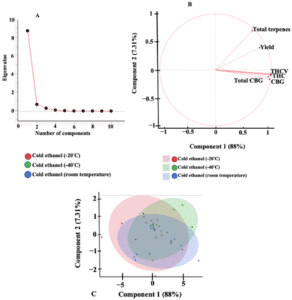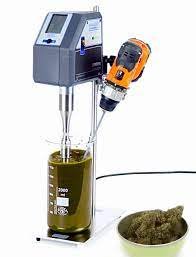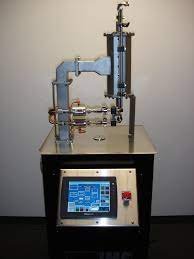The cannabis and hemp industry has experienced exponential growth over the past decade, driven by the legalization and decriminalization movements across the globe. As demand for high-quality cannabis and hemp products increases, so does the need for advanced extraction methods.
Traditional extraction techniques are being revolutionized by cutting-edge technologies designed to enhance efficiency, purity, and sustainability. This blog delves into the latest innovations in cannabis and hemp processing equipment, offering a glimpse into the future of extraction.
Sections
ToggleEvolution of Extraction Methods
The extraction of cannabinoids and terpenes from cannabis and hemp plants has traditionally relied on methods such as solvent-based extraction (using ethanol or butane), CO2 extraction, and steam distillation.
While effective, these methods often present challenges related to safety, efficiency, and environmental impact. Recent advancements are addressing these issues head-on, paving the way for more sophisticated and sustainable extraction processes.
Advanced CO2 Extraction Systems

Supercritical CO2 extraction has long been favored for its ability to produce clean, high-quality extracts without residual solvents. Recent innovations in this area include:
- Precision Control Systems: Modern CO2 extraction systems now feature advanced software and automation, allowing for precise control over temperature, pressure, and flow rates. This precision enhances the efficiency and consistency of the extraction process, ensuring optimal yield and quality.
- Inline Fractionation: This technique allows for the separation of different compounds during the extraction process. By fractionating the extract inline, processors can isolate cannabinoids, terpenes, and other desirable compounds in a single run, reducing processing time and costs.
- Energy Efficiency Improvements: Newer CO2 extraction machines are designed to be more energy-efficient, incorporating features like heat recovery systems and improved pump technology. This not only reduces operational costs but also minimizes the environmental footprint of the extraction process.
Solventless Extraction Technologies

Solventless extraction methods, such as rosin pressing and ice water extraction, are gaining popularity due to their simplicity and purity. Innovations in this field include:
- Automated Rosin Presses: Traditional rosin pressing involves manually applying heat and pressure to cannabis or hemp material. Automated rosin presses have revolutionized this process, offering consistent pressure and temperature control, leading to higher yields and better-quality extracts.
- Cryogenic Freezers: For ice water extraction, maintaining the right temperature is crucial. Advanced cryogenic freezers ensure the plant material remains at optimal low temperatures throughout the extraction process, preserving the integrity of cannabinoids and terpenes.
- Enhanced Filtration Systems: Modern solventless extraction equipment often includes sophisticated filtration systems that remove impurities more effectively, resulting in cleaner, more potent extracts.
Ethanol Extraction Advancements

Ethanol extraction is valued for its efficiency and scalability. Innovations in this domain are making it even more attractive:
- Cryo-Ethanol Extraction: By chilling ethanol to sub-zero temperatures before extraction, processors can minimize the co-extraction of unwanted compounds like chlorophyll. This results in a cleaner, more refined extract that requires less post-processing.
- Continuous Flow Systems: Traditional batch ethanol extraction can be time-consuming. Continuous flow systems enable a constant feed of plant material and solvent, significantly increasing throughput and efficiency.
- Automated Solvent Recovery: Modern ethanol extraction setups often feature integrated solvent recovery systems that automatically reclaim and recycle ethanol, reducing waste and lowering operational costs.
Ultrasonic Extraction

Ultrasonic extraction uses high-frequency sound waves to create microscopic cavitation bubbles in the solvent, which implode and disrupt plant cell walls, releasing cannabinoids and terpenes. Innovations here include:
- Scalable Systems: Early ultrasonic extraction systems were limited to small-scale operations. Recent advancements have led to the development of scalable systems suitable for commercial production, providing high yields and consistent quality.
- Improved Cavitation Control: Advanced ultrasonic equipment now offers better control over cavitation intensity and frequency, allowing for more precise extraction and reduced degradation of sensitive compounds.
Microwave-Assisted Extraction

Microwave-assisted extraction (MAE) is a relatively new technique that uses microwave energy to heat solvents and plant material, accelerating the extraction process. Key innovations include:
- Selective Heating: Modern MAE systems can target specific compounds within the plant material, enhancing selectivity and yield of desired cannabinoids and terpenes.
- Reduced Processing Time: MAE significantly reduces extraction time compared to traditional methods, increasing efficiency and throughput for commercial operations.
- Eco-Friendly Solvents: Innovations in MAE are also exploring the use of more environmentally friendly solvents, aligning with the industry’s move towards greener practices.
Nanotechnology in Extraction

Nanotechnology is beginning to make its mark on the cannabis and hemp extraction industry. By manipulating materials at the nanoscale, extraction processes can achieve unprecedented efficiency and purity.
- Nanoemulsions: Creating nano-sized emulsions of cannabinoids allows for better bioavailability and faster onset times in consumer products. Advanced extraction equipment can produce these nanoemulsions directly, streamlining the production process.
- Enhanced Filtration: Nanotechnology-based filtration systems can more effectively remove impurities at the molecular level, resulting in exceptionally pure extracts.
- Targeted Delivery Systems: Nanotechnology also enables the development of targeted delivery systems that can encapsulate cannabinoids and release them in specific areas of the body, enhancing therapeutic effects.
The Future is Green: Sustainable Extraction Practices

As the cannabis and hemp industry grows, so does the emphasis on sustainability. Future extraction innovations are likely to focus heavily on eco-friendly practices:
- Bio-Based Solvents: Researchers are developing new bio-based solvents derived from renewable resources, offering a greener alternative to traditional petroleum-based solvents.
- Waste Reduction Technologies: Innovative equipment designs are minimizing waste throughout the extraction process, from solvent recovery systems to compostable plant waste by-products.
- Energy-Efficient Operations: Advances in energy-efficient machinery and renewable energy integration are set to reduce the carbon footprint of extraction facilities.
The future of cannabis and hemp extraction is bright, with a myriad of innovations poised to transform the industry. From advanced CO2 systems and solventless techniques to ultrasonic and microwave-assisted extraction, the landscape is rapidly evolving. As technology continues to advance, we can expect even more efficient, sustainable, and high-quality extraction methods to emerge, driving the industry forward and meeting the growing demand for cannabis and hemp products. Embracing these innovations will be key for processors aiming to stay competitive and environmentally conscious in this dynamic market.




